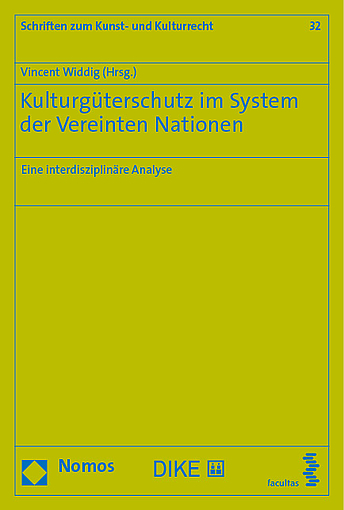englischThe images of the destroyed Buddha statues of Bamiyan, of the ancient city of Palmyra lying in ruins, and of destroyed World Heritage sites in Timbuktu have received much attention from the international public. At the same time, these cases also reflect a new dimension in the conduct of armed hostilities today, which is increasingly aimed at destroying cultural identities or heritage. Therefore, in addition to the issue of preserving the world's cultural heritage, especially in the context of human rights protection and international humanitarian law, the protection of cultural property is seen as an increasingly important task for the United Nations and its institutions.
Pieces of Art, significant written documents, memorials, and places of worship are deliberately destroyed in conflicts by armed or terrorist groups, such as the so-called Islamic State, as they represent core elements of cultural identity. The increasing number of reports on the loss of priceless cultural assets in Syria, Iraq and Mali exemplify this. Increasingly, violent non-state actors are deliberately using the destruction of cultural property as a means of warfare and even "ethnic cleansing." For the international community, this makes the protection of cultural property in armed conflicts and in the field of restoring statehood at the same time increasingly significant. The preservation of this global human memory is one of the greatest challenges of modern social, political, and legal discourses. Although the use of the destruction of cultural property to divide societies, even to erase a collective memory or destroy social structures, has long been part of warfare, this aspect has been insufficiently considered by the media public and especially in academic discourse.
With contributions by
Frederik Becker, RA Dr. Manuel Brunner, Paul Fabel, Dr. Martin Gerner, Ruth Lecher and Vincent Widdig.
Die Bilder der zerstörten Buddha-Statuen von Bamiyan, der in Trümmern liegenden antiken Wüstenstadt Palmyra und von zerstörten Weltkulturerbestätten in Timbuktu haben viel Aufmerksamkeit in der internationalen Öffentlichkeit erhalten. Gleichzeitig spiegeln die Fälle auch eine neue Dimension der heutigen Führung bewaffneter Auseinandersetzungen wider, die vermehrt auf die Zerstörung von kulturellen Identitäten abzielen. Deshalb wird der Schutz von Kulturgütern neben der Frage der Erhaltung des weltweiten Kulturerbes, insbesondere im Rahmen des Menschenrechtsschutzes und des humanitären Völkerrechts, als zunehmend wichtige Aufgabe für die Vereinten Nationen angesehen.
Mit Beiträgen von
Frederik Becker, RA Dr. Manuel Brunner, Paul Fabel, Dr. Martin Gerner, Ruth Lecher und Vincent Widdig.


